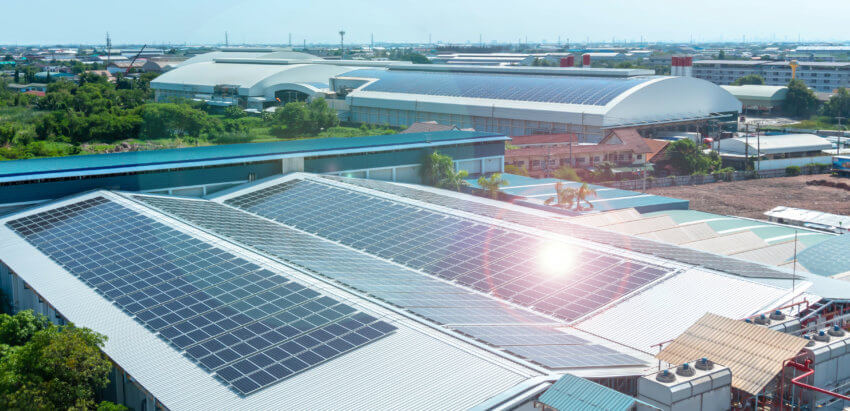Build a decarbonisation business case that speaks volumes
Building a credible business case for decarbonisation matters – but how do you articulate it to senior decision makers? Plan Zero Director, Mike Sewell, explains.
There’s no way around it – decarbonisation must become a strategic priority to thrive and survive in the future. And that has to happen now.
As we explored in our Net Zero Navigator, achieving the best results requires buy-in at all levels, but this is easier said than done. Especially when you’re contending with differing priorities and worldviews among leadership and the wider organisation.
That’s why, to build a credible business case for decarbonisation, you must understand what makes your decision-makers tick, the benefits of the initiatives you’re proposing, and the most effective route forward.
For the second blog in our Decarbonisation, Delivered series, we asked Mike Sewell, Plan Zero Director at Mitie, to share his thoughts on presenting decarbonisation strategy to senior leaders. Here’s what you need to know.
Zero in on the cost of inaction
In 2019, the UK government passed laws to help achieve net zero by 2050. And in 2021, it set a further target to reduce carbon emissions by 78% by 2035. While many organisations have already committed to these targets, cultural ambivalence remains a big problem. Because 2050 is decades away, right?
“Let’s face it, the executives you’re speaking to could be retired by 2050, and they may not be so scared by it,” says Mike. “But by failing to demonstrate strategic action, you’re going to lose favour among customers and investors, especially when share prices are so heavily influenced by your organisation’s ESG activity. The penalties aren’t worth it.”

These aren’t the only shortcomings either. Failing to show progress in the pursuit of net zero can alienate emerging talent, who want to work for sustainable companies. And let’s not forget that the UK government has already fined more than 30 organisations for breaching schemes launched to reduce greenhouse gas emissions.
Senior executives will want to know the facts and figures behind these threats, and chances are they’ll want to take action. These aren’t theoretical or predictive challenges; they’re tangible and need to be addressed now.
With that said, it’s not all about avoiding the negatives. There are exciting benefits to an effective decarbonisation strategy, and the next step is using those benefits to win strategic support.
Convince senior decision makers by speaking their language
Over the last twenty years, the biggest driver for improving energy efficiency has been optimising costs. And that hasn’t changed with decarbonisation – you need to sell executives a plan of action that makes good financial sense.
But one of the most common mistakes when talking to senior decision makers is assuming that everyone shares the same views on the need for decarbonisation, and failing to highlight the benefits.
“There are two extreme views to consider, but most people will sit in the middle,” says Mike. “Some consider decarbonisation as responding to alarmist pseudoscience, while others want to know why you didn’t solve it yesterday. With the former, you can’t expect them to buy into the environmental benefits, and the latter needs to see that net zero can’t get in the way of you making money. It needs careful planning.”
Whether your organisation has made a net zero commitment or not, you need to identify the most cost-effective route forward and lead with it. This means showing your decision makers how investment can increase your bottom line and reduce dependency on the grid, and how you can improve your energy security as traditional fuels become harder and more expensive to procure.
“If you say, ‘This is where we are, this is where we need to be, and this is how we get there – and it’s going to pay for itself’, you’re in a much stronger position to negotiate,” says Mike. “Ideally, you should focus on benefits like reducing energy costs, improving energy resilience, and attracting investors – things everyone can get behind.”
Make the ‘prosumer’ business case
Energy security makes a powerful pro-decarbonisation argument during periods of socioeconomic uncertainty.
Regardless of their beliefs or economic priorities, senior decision makers know that your organisation needs consistent and affordable energy. Right now, it’s uncertain that the national grid can deliver that. But self-generated renewable energy can.
In Mitie’s recent breakfast briefing with Dr Steven Fawkes, Managing Partner at EP Group, he spoke about the emergence of the ‘prosumer’ – a model in which you both consume and generate energy. And it’s an approach Mike believes can add credibility to your case.
“Solar photovoltaics (PV) can generate electricity faster and cheaper than you can buy it, and in time, you can even sell that energy back to the grid,” he says. “Plus, you’re guaranteed a consistent, reliable, and affordable source of green energy – and who will argue with that?”

Now you understand what the top table wants to hear, you must back it up with evidence – including quantifiable data.
Rally support with visible commitments
Every credible business case needs a clear baseline of where your organisation is now and where it could be. For example, look at your current energy costs and carbon emissions and calculate how your strategy can improve them and how you will measure its success over time.
“People will be nervous about this, so you need the data to back up the benefits,” says Mike. “For example, if I showed you an LED lamp that uses 25% less energy and said I was going to install 2,000 of those in your building, you’re going to understand the saving – but not all technologies are this simple. So, get your numbers clear.”
As for rallying the wider organisation around decarbonisation, you need to be seen acting on your strategy and, ideally, doing so in a way that changes colleagues’ daily working life.
“There are small but powerful changes you can make that everyone can understand and contribute to,” said Mike. “Get rid of single-use plastics, add recycling points, and revamp your organisation’s fleet with electric vehicles – and offer on-site charging. When people see real-life changes, that counts for much more than what you may be doing behind the scenes. It will inspire engagement and support.”
Get Decarbonisation, Delivered
At Mitie, we have the energy management, engineering, and sustainability experience to help you create an effective decarbonisation strategy that works for everyone. We have also spent the last decade helping some of the UK’s biggest names to decarbonise; last year alone, our team consulted with 372 clients to help decarbonise more than 800 sites and buildings.
Using that knowledge, we’ve put together a guide to overcoming the five biggest challenges to reaching net zero, including calculating affordability and getting buy-in across the organisation.
If you have any questions, please get in touch by filling in the form and a member of the team will get right back to you.
How can we help?
If you’re looking for more information, need to talk to someone about an enquiry or want to chat about your service needs, then you’ve come to the right place.
Please fill in our short form and a member of our team will be in touch.
If you have a supplier enquiry, please visit our dedicated portal on www.mitiesuppliers.com
 Skip to content
Skip to content